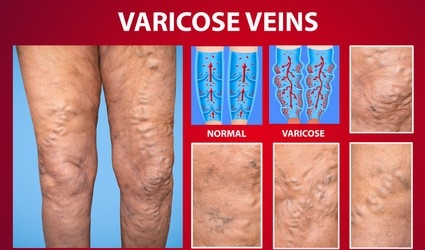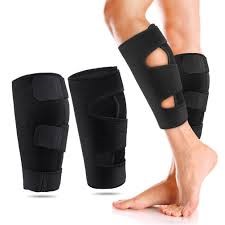Fashion and Varicose Veins: Stylish Clothing for Comfort by Dr. Amit Sahu, Interventional Radiologist in Mumbai
Introduction
Varicose veins can be more than just a health concern; they can also impact the way we dress. As a senior Interventional Radiologist in Mumbai, Dr. Amit Sahu often encounters patients struggling to find clothing that is both stylish and comfortable while managing varicose veins.
In this guide, we’ll explore how clothing choices can affect varicose veins and offer fashion tips for managing them with style and ease.

Understanding Varicose Veins
Varicose veins are enlarged, twisted veins that usually occur in the legs. They can be caused by weakened valves and increased pressure on the veins. This result is poor circulation and discomfort, making it essential to choose clothing that doesn’t exacerbate these issues.
How Clothing Can Affect Varicose Veins?
Tight-fitting clothing, such as skinny jeans, shapewear, and tight socks, can restrict blood flow in the legs. This restriction can worsen varicose veins by making it harder for blood to pump back to the heart.
Wearing high heels for longer duration can also impact and worsen varicose veins, so be mindful about these.
Conversely, loose-fitting clothing promotes better circulation and reduces pressure on the legs, benefiting vein health.
Fashion Tips for Varicose Vein Management
Choosing the Right Bottoms
- Wide-leg pants: Embrace comfort and style with wide-leg trousers, palazzo pants, and flowy pants. Opt for options with elastic waistbands for added ease of movement.
- Skirts and dresses: Midi skirts, maxi skirts, and flowy dresses offer breathability and a comfortable fit. Dresses with pockets add a touch of practicality.
- Summer considerations: For hot weather, choose lightweight, breathable fabrics like linen, cotton, and rayon. Capri pants or culottes are stylish summer options.
Tops and Layering
- Comfort and fitness are key: Select loose-fitting tops that are not tight around the the waist or abdomen.
- Layering for cooler weather: Layer your look with loose cardigans, kimonos, or jackets for added warmth.
Shoes and Accessories
- Footwear: Prioritize comfort and support with low-heeled or flat shoes. For cooler weather, wide-shaft boots can be an option, but ensure they are not tight around the calves. If you do wear high heels, try to minimize the duration.
- Accessories: Draw the eye upwards with loose-fitting scarves, belts, and statement jewellery.
Clothing Accessories for Varicose Veins
In addition to clothing, certain accessories can aid in varicose vein management:
- Compression socks and stockings: Compression stockings play a vital role in managing varicose veins by applying gentle pressure to the legs. This pressure helps improve circulation and reduce symptoms. Compression stockings come in various styles, including thigh-highs, knee-highs, and pantyhose. Consulting a doctor for proper fitting and selection is crucial.

- Varicose vein bands and wraps: These provide targeted support to problem areas, helping to alleviate discomfort.

By incorporating these accessories into your wardrobe, you can effectively manage varicose veins while maintaining your personal style.
Specialized Clothing for Varicose Veins
For those seeking more targeted relief, specialized clothing options are available:
- Men’s varicose veins socks: These socks are designed with male anatomy in mind, providing support and comfort for everyday wear.
- Women’s varicose veins socks: Similarly, women’s socks offer support and style, with various designs to suit different preferences.
- Compression stockings for varicose veins: Available in a range of styles and compression levels, these stockings provide gradual pressure to improve circulation and reduce symptoms.
Skin Care for Varicose Veins
Varicose veins can lead to dryness and itching of skin.
Keep your legs regularly moisturized. Avoid prolonged heat exposure to your legs like hot fomentations, long steam, sauna baths, cupping therapies. Certain massages do help improve varicose related symptoms.
Do discuss with your doctor about the same.
Schedule a Consultation
If you experience varicose vein symptoms, consult a doctor for diagnosis and treatment options. You can reach Dr. Amit Sahu’s clinic by clicking here.
Conclusion
By making smart clothing choices, regular skin care and considering compression stockings, you can manage varicose veins and feel confident and stylish. Remember, Dr. Amit Sahu is available to discuss personalized treatment options for long-lasting relief.
Q: What are varicose veins?
Q: What are the symptoms of varicose veins?
A: Symptoms of varicose veins may include bulging veins, aching or throbbing pain, a heavy or uncomfortable feeling in the legs, swelling, itching and a worsening of symptoms after prolonged standing or sitting.
In advanced cases patients may develop severe swelling in legs, discoloration of skin, bleeding from varicocities and non-healing ulcers.
Patients with varicose veins may also be at increased risk of developing Deep Vein Thrombosis (DVT), a serious complication which may place the leg or even life at risk.
Q: Who is at risk of developing varicose veins?
A: Several factors increase the risk of developing varicose veins, including age (the risk increases with age), gender (women are more likely to develop varicose veins), family history of varicose veins, obesity, pregnancy, prolonged sitting or standing.
Q: How are varicose veins diagnosed?
A: Varicose veins are usually diagnosed through a physical examination by a healthcare professional. They may also order additional tests such as an ultrasound to assess the blood flow in the veins and to rule out other underlying conditions.
Q: Can varicose veins be prevented?
A: While you cannot completely prevent varicose veins, there are steps you can take to reduce the risk or delay their onset.
These include maintaining a healthy weight, exercising regularly, avoiding prolonged sitting or standing, elevating your legs when resting, avoiding high heels and tight clothing that can restrict circulation and wearing compression stockings.
Q: What are the treatment options for varicose veins?
A: Treatment options for varicose veins include lifestyle changes (e.g., exercise, weight management), self-care measures (e.g., wearing compression stockings), minimally invasive interventional procedures (like sclerotherapy, EVLT – endovenous laser treatment, Venaseal – glue based treatment), and open surgery.
Q: How effective are minimally invasive interventional procedures for treating varicose veins?
A: Minimally invasive procedures, such as sclerotherapy, endovenous laser treatment (EVLT) and Venaseal (Glue based treatment) , have shown very good success rates in treating varicose veins. These procedures are typically well-tolerated, have minimal downtime, and can be performed on an outpatient basis.
These do not require prolonged admission or any sort of stitches, cuts like in traditional surgery. Also being minimally invasive they are cosmetically better.
Q: Is varicose vein treatment covered by insurance?
A: Most of the insurance providers cover these interventional procedures. The coverage of varicose vein treatment by insurance can vary depending on the insurance provider and the specific policy. It is advisable to check with your insurance provider to understand the coverage policy and any requirements or restrictions.
Q: Are there any risks or complications associated with varicose vein treatment?
A: Like any medical procedure, varicose vein treatments carry some risks and potential complications. Though these are very uncommon and very rare if performed by skilled interventional radiologist.
These can include temporary bruising, swelling, or pain at the treatment site, skin discoloration, blood clots, infection, nerve damage, and recurrence of varicose veins.
Consulting with a qualified interventional radiologist can provide you with a better understanding of the risks associated with specific treatment options.
Q: Can varicose veins come back after treatment?
A: Varicose veins can sometimes reoccur even after treatment. This is more likely if underlying risk factors, are not addressed and optimized. Following a healthy lifestyle, wearing compression stockings as recommended, and regularly monitoring your veins can help reduce the likelihood of recurrence.